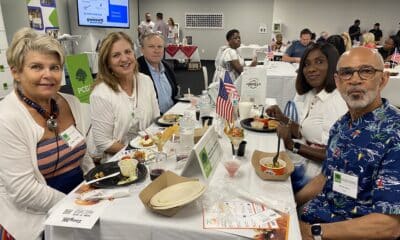Arts & Literature
Wesleyan Artist Market Celebrates Its Silver Jubilee in 2023
Published
1 year agoon
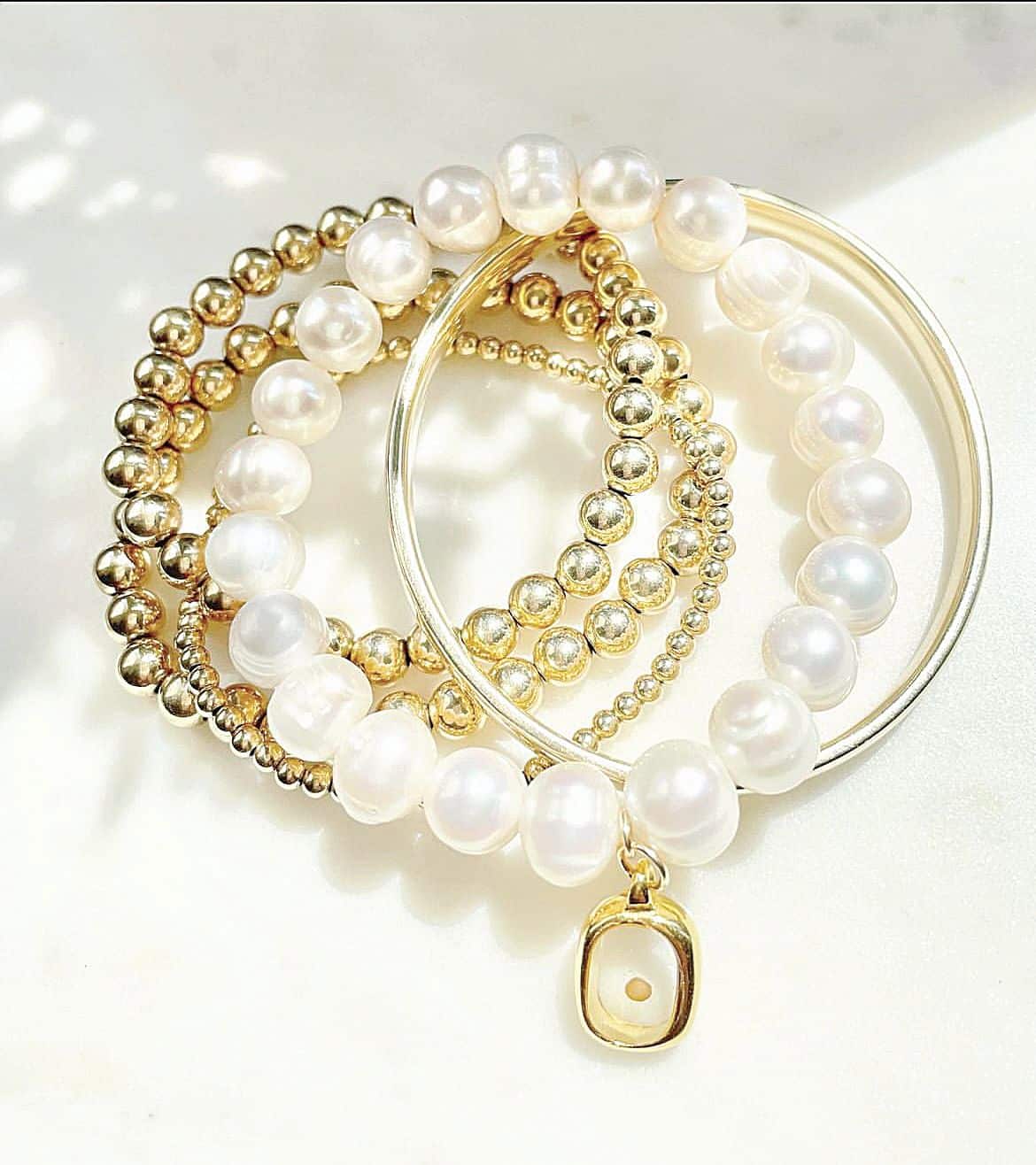
This spring ushers in the 25th annual Wesleyan Artist Market (WAM), our favorite local fine art, jewelry and fine wares show. It’s set for Friday, April 28, 10 a.m.-7 p.m., and Saturday, April 29, 10 a.m.-3 p.m. at the Wesleyan School in Peachtree Corners.
Enjoy scrumptious beverages and snacks while taking in the talents of 85 professional artists from all over the Southeast and 19 student artists. This two-day event is open to the public; parking and admission are free.
Engage with artists as you hunt for works that you’ll treasure for years to come. “Come to the Table,” Wesleyan’s hardcover cookbook with over 200 recipes, will be available for purchase. Proceeds help fund Wesleyan’s fine arts programs.
This year, your support will facilitate the purchase of a new truck for the marching band, the refurbishing of a Steinway piano, new chorus risers and upgraded lighting in Powell Theater.
From casual customers to avid collectors, WAM always delights. To preview participating artists, visit artistmarket.wesleyanschool.org. Cheers to 25 years, WAM!
Spotlight on three artists
Wendy King — Poppy and Jewel
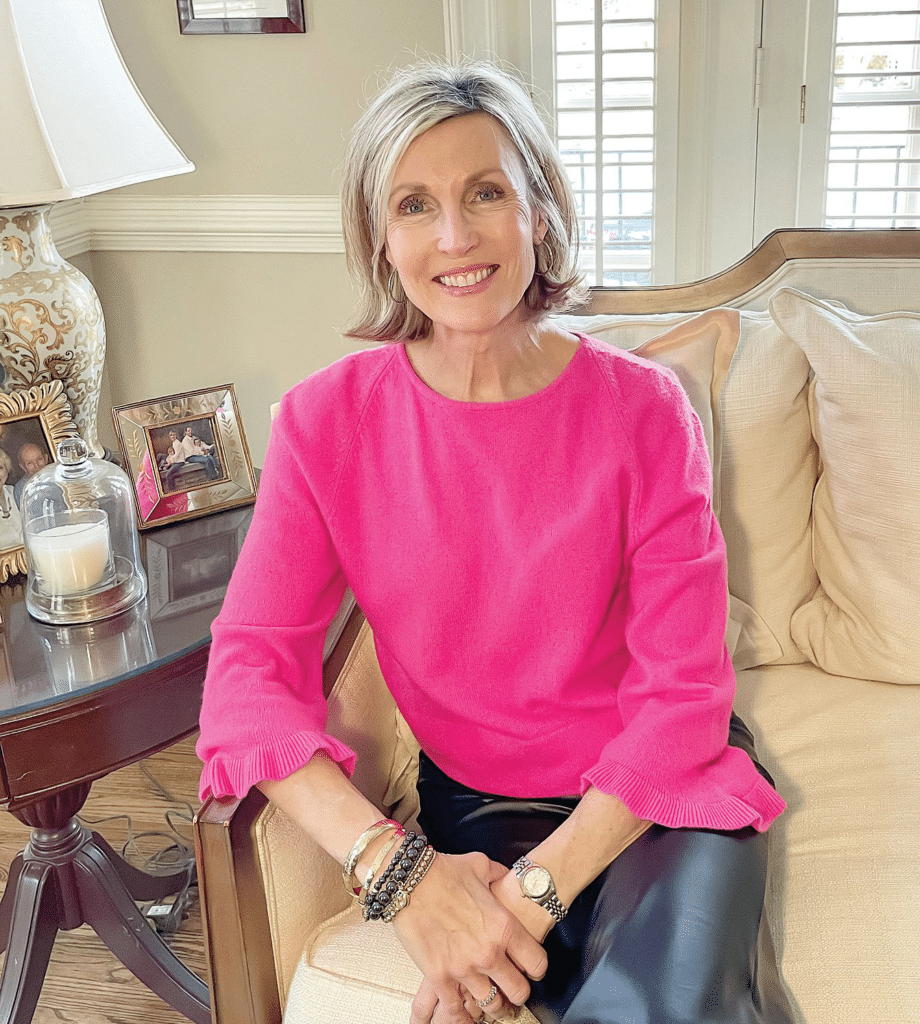
Inspirational jewelry that cuts the mustard
When Wendy King received a spherical, vintage charm containing a single mustard seed from her husband’s grandmother long ago, she had no idea it would be the catalyst for starting her own inspirational jewelry line one day, nor that it would have such a profound and far-reaching impact on others.
In the 1950s and 60s, it was apparently customary to gift such charms, alluding to the parable of the mustard seed. Some were set in brooches, many hung on necklaces.
King found it was very effective to wear the sentimental trinket she had received as a reminder to walk in faith every day. She elected to sport the bauble on a stylish new bracelet and realized that women today would be more likely to benefit from continuing this tradition if the cherished charms of yesteryear with real mustard seeds inside were set in more contemporary, fashion-forward jewelry pieces.





“A lot of the religious jewelry has a similar look. I wanted to elevate it, put a different spin on it,” King said.
She thought she could breathe new life into these vintage charms by using them to create contemporary jewelry pieces. “I went to antique stores, but it was like finding a needle in a haystack, especially to find them in good shape. That’s when I realized I’d have to make the charms myself too,” she added.
Today, her Poppy and Jewel pieces are made with natural gemstone beads like white lace agate, amazonite, aquamarine, pearl, tiger’s eye, labradorite, hematite and river stone and her perfected bezels with metal finishes in silver, polished gold or antique brass. Each one contains a solitary, immortalized, goldish-brown mustard seed suspended in the center of a clear resin-filled charm.
“You don’t have to see the whole staircase; just take the first step.” – Martin Luther King
It’s a powerful visual, to see how physically tiny a mustard seed really is. King painstakingly creates lovely earrings, necklaces and bracelets — vessels that spark the might of faith when worn.
Her jewelry line speaks with the promise that if you believe it, everything will work out for the best. Each distinctive piece comes with a card explaining the parable that inspired it.
Faith can move mountains — pass it on
Jesus says in Matthew 17:20, “For truly I tell you, if you have faith the size of a mustard seed, you will say to this mountain, ‘Move from here to there,’ and it will move; and nothing will be impossible for you.”
It’s a message that transcends all faiths and provides comfort whether you’re religious or not. We all go through low points when digging deep to find the strength to triumph is vital.
Even the smallest amount of faith in an all-powerful God, or an ever-just universe, results in great things. Sometimes life’s tests may seem insurmountable: divorce, job loss, infertility, illness.
That’s when you must believe in your heart, without a doubt, that God or the universe is bigger than those mountains. It’s hard to do in our we-have-to-see-it-now-to-believe-it society. Enter Poppy and Jewel. Cue “You Gotta Have Faith” (George Michael, 1987)
King has enjoyed witnessing the organic growth of the one-woman enterprise she started in 2016 named after her maternal grandparents who planted the seeds of faith in her. The ripple effect of customers sharing her pieces is special.
“I can’t tell you how many times I’ve had people tell me they hear stories that grip their hearts and give their bracelets away to comfort someone in need. Then I get an email, “Well, I gave another one off my wrist. I need to restock.” That’s what it’s for. You hear somebody going through a rough patch and you pass it on,” King smiled.
The evolution of an artisan
A bachelor’s degree in government administration didn’t exactly allow King a creative outlet. Nor did her 12-year stint as a fitness instructor at Country Club of the South. She founded Poppy and Jewel when her kids were still in school, and she was able to ramp production up or down as needed. “Now that they’re grown, I can devote so much more to it,” King said.
Producing her pretty, handcrafted pieces took plenty of trial and error. “The first time I worked with the resin, I poured it, set the seed in and wondered why it was gooey. It took years of making charms that I can’t use. Those little boogers float around,” she laughed.
Lately, King has been working with a company to replicate the vintage charm that started it all for her. They are three samples into tweaking a spherical bauble with a metal band around it that should be available in a few months.
Behind the scenes
Removing air bubbles in the resin, stringing smaller beads one by one with a needle and thread, perfectly positioning the seeds — it’s tedious work.
If the resin mixture isn’t spot on and perfectly timed, it doesn’t cure correctly. It’s all part of learning what works. “I’m very methodical now. I follow the same steps every time. I don’t want any mishaps,” King explained.
This jewelry line is a true labor of love for King who has since fine-tuned her two-step resin pouring process. Still, every phase of a successful batch of charms has to be completed within a certain window. She purchases the bezels (the empty metal part), mixes the resin with hardener, pours it and positions the itty-bitty mustard seed in the center while wearing glasses and a magnifying glass.
King patiently allows it to cure, but she must also check on them at exactly the right time to be able to redirect any seeds that may have drifted. Once that stage has cured properly, a second round of resin is poured.
King prefers to work on small batches of about 100 charms at a time. “When inspiration hits, I’ll go to my studio down the hall and work while those juices are flowing and I’m in that creative mindset, whether it’s crack of dawn:30 or late at night,” she said.
Shop Poppy and Jewel
Shop King’s handcrafted jewelry in person at WAM, The Red Hound in Norcross and Alpharetta, Under the Palm Tree in Dunwoody, and Josephine’s Antiques in Roswell. Electronically, visit her website, poppyandjewel.com, or Instagram account, @poppy_and_jewel.
Customizations include requests for particular colors, smaller or larger sizes. Some people bring their own beads or a broken necklace to be used. If you find a vintage charm after rifling through your family’s jewelry boxes, you can have it added to Poppy and Jewel bijouterie.
“If it brings a sense of joy or hope to somebody, if I touch one person’s life, then I’ll keep doing what I’m doing,” King declared.
Shane Miller — Artist

Stumble into art
Maryland native Shane Miller did just that, and he’s been swimming since 2016. Miller transferred to Nashville in 2013. He always knew he’d do something creative full time, but he didn’t realize it would be painting until a chance encounter at an art crawl with Paul Polycarpou, then CEO of Nashville Arts Magazine, changed his instrument from guitar to paintbrush.
Miller had already hung up his physical therapist hat after six years in the field to pursue music. His father introduced him to guitar early. He took lessons at age 10 and was giving them by 15.
Strumming for a living wasn’t much of a stretch. For most, it would be a giant stretch. For musical Miller, easy peasy.
Touring on weekends with an independent artist, his year in the life of a professional musician allowed more time for painting. Eventually, the music volume decreased as the painting volume amplified.
A natural knack
“I had a watercolor tutor in high school. Before that, I’d draw on the back of my worksheets in elementary school. I have a natural knack for it,” Miller stated.
Miller clearly paid attention in watercolor class where he learned the fundamentals of color theory and composition. Through college and thereafter, he painted in his spare time.
After trying different styles, he settled on creating what most resonated with him: abstract, atmospheric landscapes influenced by tonalism like those one might recall from a reverie or a distant memory, using oils on canvas.
Miller took Polycarpou up on his open-door policy for local artists. The executive was open to critiquing artists’ work and had offered to introduce Miller to a gallery in town when he believed him to be ready.
True to his word, Polycarpou provided direction and in a short time, Miller signed with the Rymer Gallery. Others ensued.
Needless to say, the painter isn’t missing his regimented physical therapy days. He considers his flexible schedule a dream. “I’m happy with my career. It was an interesting road getting here,” he said.
The sway of social media
Curating a cohesive Instagram story and posting regularly paid off for the promising artist. The platform revealed a market for his work. Miller was both astonished and assured by people’s readiness to buy paintings online.
“I’ve shipped work all over the world: the UK, Australia, Japan, the Philippines, Germany — all through the power of the internet,” Miller said.
Studio space
Miller works out of his Germantown studio with soaring ceilings, a massive north-facing window and skylight in an old flour mill that’s been converted into a business collective north of downtown Nashville.
A believer in being disciplined, he reports to his atelier daily, inspired or not, “You have to be consistent with showing up. Diving in allows creativity to start flowing.”
The painter’s process
Miller finds inspiration in his travels. He doesn’t work from reference photos; he finds them restrictive. Surprisingly, he doesn’t aim to depict any particular panorama. He paints from his imagination.
More interested in expressing himself and capturing feelings, he seeks to take viewers on a spiritual voyage. “Painting is a subconscious process for me, like meditation,” he explained.





Miller paints bodies of water because, besides being visually interesting, they create lines leading the eye into the composition. It evokes turning a chapter, especially flowing rivers.
His monochromatic, non-specific landscapes act as a bridge to tap into emotions. He’s pleased when people feel like they’ve been to “that place” in any of his paintings.
A prolific painter, his preference is to juggle about six pieces at once. “I paint skies on different days than the foreground, working in batches. I’ll mix a certain color and carry it throughout multiple paintings so I’m not wasting paint. It’s a nice way to streamline things and jump around through different pieces,” Miller said.
Stepping away frequently when working on multiples allows him to avoid tunnel vision, “I can always reassess the direction.”
Most paintings are varnished once he’s done. He likes the subtle finish of satin varnish mixed with cold wax for a less reflective sheen.
Mystery blooms
“Recently I’ve been painting abstract florals. There aren’t many rules when painting florals,” Miller stated. One gets the impression he wouldn’t follow any if there were. He enjoys using brighter colors than he would in his landscapes.
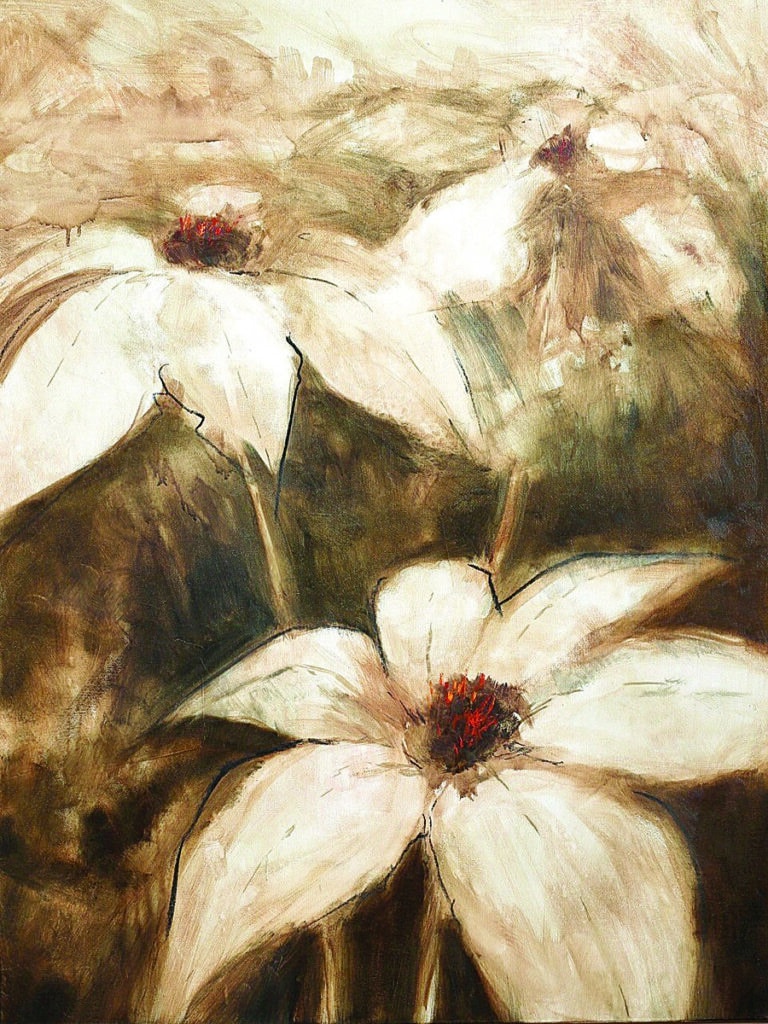
“I don’t know one flower from the next. I just paint whatever shape looks great and my wife will say, “That looks like a lily.” For Miller, it’s about creating a composition that feels right.
A left-brained creative?
Miller has a penchant for numbers and organization. “I have systems to keep track of everything,” he said. His paintings have an identifier that correlates to a spreadsheet and an internal tracking system. He can trace any piece, whether it’s at the studio, at a gallery or sold.
Miller dove into the accounting cycle and relishes keeping up with his books. Documenting his endeavors makes him feel accomplished.
A logbook holds records of the colors and dates of every layer of every painting — all steps taken to achieve the end result. These come in handy when clients request something similar to one of his older works.
“Painting is a very subtle thing, especially working in layers. It could be hard to recall every step,” Miller explained.
Commissions
At shows like WAM, you might not find exactly what you’re looking for, but if you like his style, Miller can create a unique piece for you. One can request a painting reminiscent of a location — the Carolinas, a marsh, the coast or mountains — and any desired elements for the piece.
Miller then gets to work. A 20% deposit gets the ball rolling. Within a month, one can expect to see photos and videos of a piece for final approval.
Shop Shane Miller Art
Meet Miller and see his work at WAM. So that buyers can purchase with confidence, he is responsive to inquiries from his website, shaneartistry.com or through Instagram @shane.artistry.
“Art washes away from the soul the dust of everyday life.” — Pablo Picasso
Miller espouses Picasso’s sentiment. He feels painting or any creative outlet is an escape from the mundane and rejuvenates the spirit.
Jennifer Keim – JKEIM Fine Art and Lifestyle Design
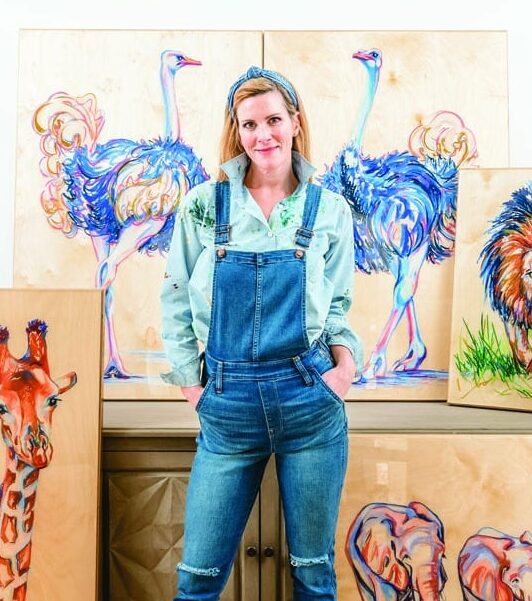
Becoming JKEIM
Atlanta artist Jennifer Keim switches between oils, pastels and mixed media to best capture her subjects’ personalities. She’s been fostering her artistic talent since fourth grade at the behest of the late Jill Chancey Philips, a summer camp instructor at the Columbus Museum who noticed she had something special.
Keim studied under Philips until earning a Bachelor of Fine Arts in drawing and painting at Auburn University. Philips owned the gallery and studio where Keim spent her young adult summers learning the business side of being a professional artist.
She credits her mentor for emphasizing grit and form. “It’s so important understanding technique before you can evolve your style. You have to understand dimensions, perspectives and shading to bring a subject onto the page,” she said.
Keim worked in advertising for practical reasons until a successful solo art show convinced her she could do art full-time. She felt “suffocated” behind the computer, so in 2007 she left graphic design for a career as a painter.
Art therapy
An unfinished space in her home is Keim’s special place. Nails dot the walls where pieces have come and gone. Paint and resin splashes adorn the studio floor. Her beautiful work surrounds her on all sides.
Seeing how color and shadowing can bring the beauty of a subject up off the page has always intrigued Keim for whom painting is a creative outlet. “It feels good. If I’m a little cranky, my husband says, ‘You might need to go to the studio for a bit.’”



Off to the Races
The jockeys and detailed horses of the pastel-on-wood Off to the Races series feature clean lines and vibrant colors. Keim captures the energy of the horse races. “My favorite part is doing the kickup,” she said.
Fun fact: Mud can splatter up to 20 feet behind a galloping horse.


Starting with a pencil drawing is key as the nonporous wood allows for only one or two strokes of pastel. After 20 years of working with high gloss resin, Keim is still surprised by the chemical reaction that occurs when it’s poured over pastels on raw wood. It enriches the woodgrain, melts the pastels heightening the colors and creates an almost 3D effect.
The family is warned before a resin session begins with “Do not enter; mommy is pouring.” Then it’s literally off to the races. It takes two to three minutes to precisely mix the concoction of resin and hardener and another 15 minutes to pour the epoxy before it gets too sticky.
Keim releases air bubbles with a torch and walks away for three days, hoping no bugs land on the curing resin. The finished pieces, with their glossy sheen and beveled edges, do not require a frame.
Generation Wild collection
An African safari in 2009 left Keim forever enchanted by the way of the wild — how the animals communicate, the smells, the circle of life. “It makes your heart beat in a different way. I still get chill bumps from it,” she said.
Capturing animals is all in the eyes in Keim’s view. “Start with the eyes. If you don’t get them right, you might as well start over,” she explains. “I have to feel like they’re blinking at me before I can move on.”





Fly Guys
“My Fly Guys collection started from my husband’s grandfather’s fly box in the studio. I was up late one night and started tinkering around with it. Creative moments,” Keim said.


Textiles
Whose Booze? It’s what Keim likes to call her set of four hand painted linen cocktail napkins with a hemstitch, each in a different color for easy glassware identification. They’ll be available at WAM for the first time this year.


Keim also makes tea towels, scarves that double as cover-ups and more. The painted fabrics are durable and washable.
Shop JKEIM
Find Keim’s artwork and textiles at WAM, Marguerite’s in Brookhaven, B.D. Jeffries in Atlanta or visit her website, jkeim.com.
A day in the life
“I jump around like a ping-pong ball, which keeps me in the groove” is how Keim describes her workday. There are textiles drying on tables and on the floor, scarves on mannequins. It’s a carefully timed game of drying stations in anticipation of the next color. Snuck in between is a layer being added to an animal piece.
She prefers coastal and mountain pieces in oils with visible palette knife blade marks. “I like to work with oil on linen or canvas with a venetian red backing. I was trained to emulate the masters,” she said.
Keim keeps a supply of canvases painted with a venetian red basecoat in all sizes at the ready, in case there’s something she wishes to paint immediately.
Commissions
Keim completes commissions of all sorts. Even her textiles can be personalized. Pinpointing what the client is interested in comes first. Next, learning what the space is like.
She’s been known to bring an assortment of works to homes to see what size works best with the ceiling height and the environment. A 50% deposit gets a commission underway.
The best part
Keim wants her work to incite nostalgia, cheer and joy. For her, the best part about being an artist is having people connect to a piece she was inspired to create.
“You’re getting a little piece of me in every one of my original works,” she said. “When all those happy moments combine, that really is magical for me.”
See you at WAM’s 25th!
I’m positive you’ll enjoy meeting these gifted artists at WAM. The show is the springtime indulgence we’ve all come to expect. Exhibitors are looking forward to meeting you and sharing their zeal for art with you.
Thanks for one exquisitely imaginative quarter of a century, WAM!
Related
Patrizia hails from Toronto, Canada where she earned an Honors B.A. in French and Italian studies at York University, and a B.Ed. at the University of Toronto. This trilingual former French teacher has called Georgia home since 1998. She and her family have enjoyed living, working and playing in Peachtree Corners since 2013.

Around Atlanta
City Springs Theatre Company Presents the Hit Musical Jersey Boys
Published
3 weeks agoon
July 3, 2024
The megahit musical Jersey Boys makes its regional premiere in City Springs Theatre Company’s (CSTC) first-ever, five-week run at the Byers Theatre in Sandy Springs.
Directed by Atlanta’s-own Shane DeLancey, and choreographed by Meg Gillentine, Jersey Boys tells the rags-to-riches story of Frankie Valli and The Four Seasons. The show details their remarkable journey from the streets to the top of the charts, to their 1990 induction into the Rock and Roll Hall of Fame.
Leading the cast of Jersey Boys is Haden Rider as Frankie Valli. Rider is a City Springs Theatre Company veteran, with recent roles in both Legally Blonde (Emmett) and Fiddler on the Roof (Perchik).

Presented by Resurgens Spine Center, Jersey Boys runs from July 12 through August 11, and shines a special spotlight on home-grown talent, as the show’s four leading men are all Atlanta-area residents.
With phenomenal music, memorable characters and great storytelling, Jersey Boys follows the fascinating evolution of four blue-collar kids who became one of the greatest successes in pop-music history.
“City Springs Theatre Company is very proud to be the first in the southeast region to present Jersey Boys,” said CSTC Artistic Director and Tony Award-winner Shuler Hensley. “Our audiences have been asking for this particular show since we opened. The production is truly stacked with talent onstage and off, and we’re pulling out all the stops to bring audiences an experience that will rival any previous version of the show.”
Jersey Boys premiered at the La Jolla Playhouse in 2005, prior to its 13-year Broadway run, from 2005 to 2017. There have been productions of the show in Las Vegas, UK/Ireland, Toronto, Melbourne, Singapore, South Africa, the Netherlands, Japan, Dubai and China.
Jersey Boys features a book by Marshall Brickman and Rick Elice, with music by Bob Gaudio, and lyrics by Bob Crewe.
Individual tickets to see Jersey Boys are on sale now ($42 – $108), with discounts for seniors, students, groups and active and retired military personnel.
CSTC’s Box Office is open Monday through Friday from 10:00 a.m. – 5:00 p.m.
Call 404-477-4365 or visit CitySpringsTheatre.com for more information.
This production contains adult language and is recommended for mature audiences.
Performance schedule:
Friday, July 12 | 8:00 p.m.
Saturday, July 13 | 2:00 p.m. & 8:00 p.m.
Sunday, July 14 | 2:00 p.m. & 7:30 p.m.
Tuesday, July 16 | 7:30 p.m.
Wednesday, July 17 | 7:30 p.m.
Thursday, July 18 | 8:00 p.m.
Friday, July 19 | 8:00 p.m.
Saturday, July 20 | 2:00 p.m. & 8:00 p.m.
Sunday, July 21 | 2:00 p.m. & 7:30 p.m.
Tuesday, July 23 | 7:30 p.m.
Wednesday, July 24 | 7:30 p.m.
Thursday, July 25 | 8:00 p.m.
Friday, July 26 | 8:00 p.m.
Saturday, July 27 | 2:00 p.m. & 8:00 p.m.
Sunday, July 28 | 2:00 p.m. & 7:30 p.m.
Tuesday, July 30 | 7:30 p.m.
Wednesday, July 31 | 7:30 p.m.
Thursday, August 1 | 8:00 p.m.
Friday, August 2 | 8:00 p.m.
Saturday, August 3 | 2:00 p.m. & 8:00 p.m.
Sunday, August 4 | 2:00 p.m. & 7:30 p.m.
Tuesday, August 6 | 7:30 p.m.
Wednesday, August 7 | 7:30 p.m.
Thursday, August 8 | 8:00 p.m.
Friday, August 9 | 8:00 p.m.
Saturday, August 10 | 2:00 p.m. & 8:00 p.m.
Sunday, August 11 | 2:00 p.m. & 7:30 p.m.
Related
Arts & Literature
Local Students Show Off Their Artistic Creations
Published
2 months agoon
June 2, 2024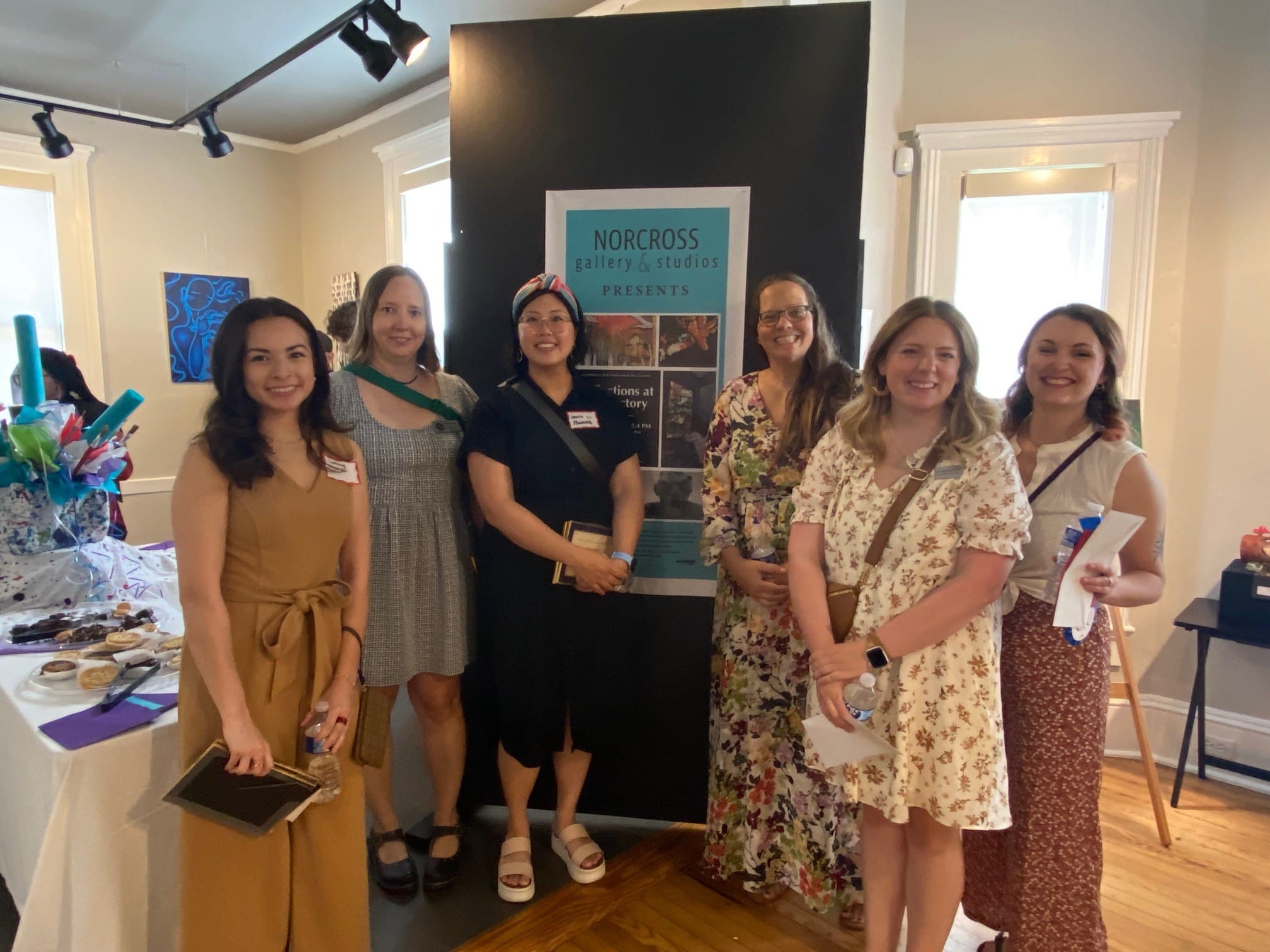
From May 11 through May 18, the Norcross Gallery & Studios kicked off a fantastic exhibition, Reflections at Rectory, which showcased the works of 36 rising stars: AP and IB art students from our local high schools.
The opening reception celebrated their creativity and dedication. Gallery director Anne Hall presented a dozen awards generously sponsored by the community, a testament to the local support for these young artists.
One prestigious award, the Terri Enfield Memorial Award, holds special significance.
Established by Terri’s daughters, it recognizes not just artistic excellence, but also leadership, work ethic and the spirit of collaboration. Last year’s winner, Aidan Ventimiglia, even played a part in selecting this year’s recipient Jasmine Rodriguez.
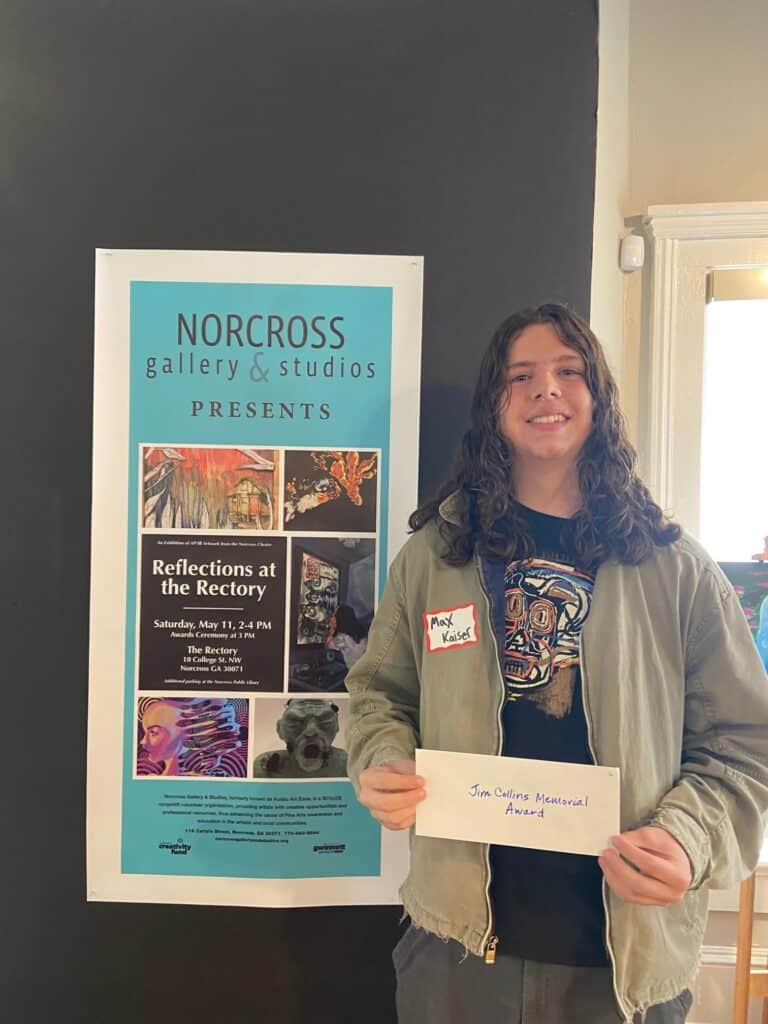
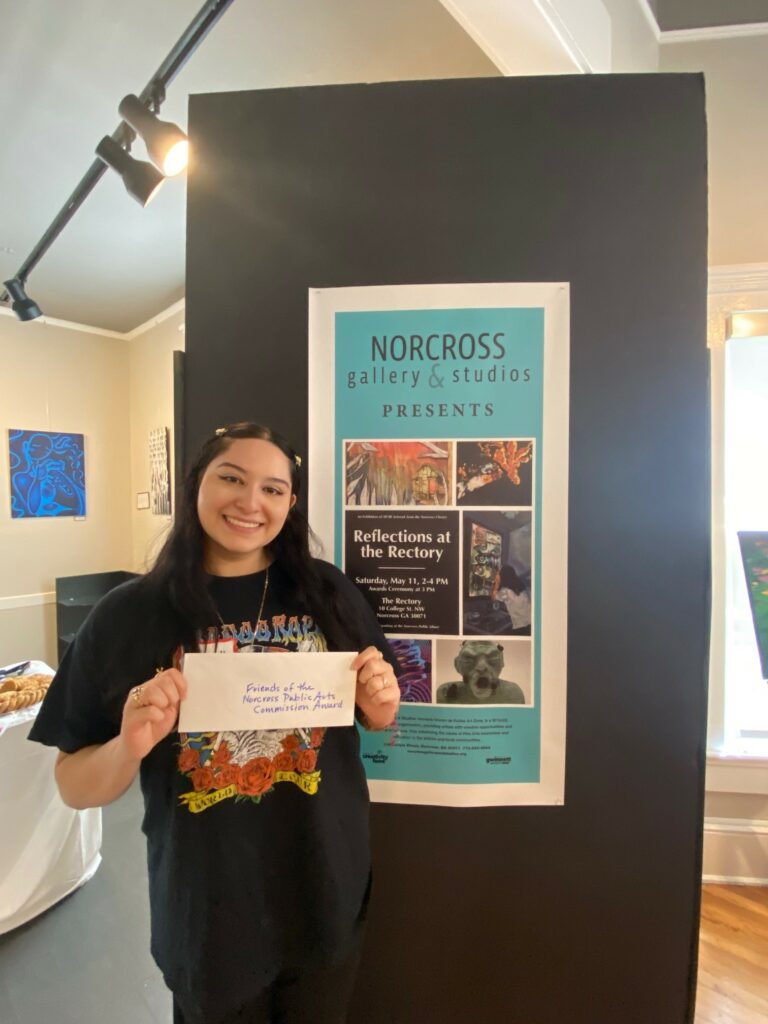
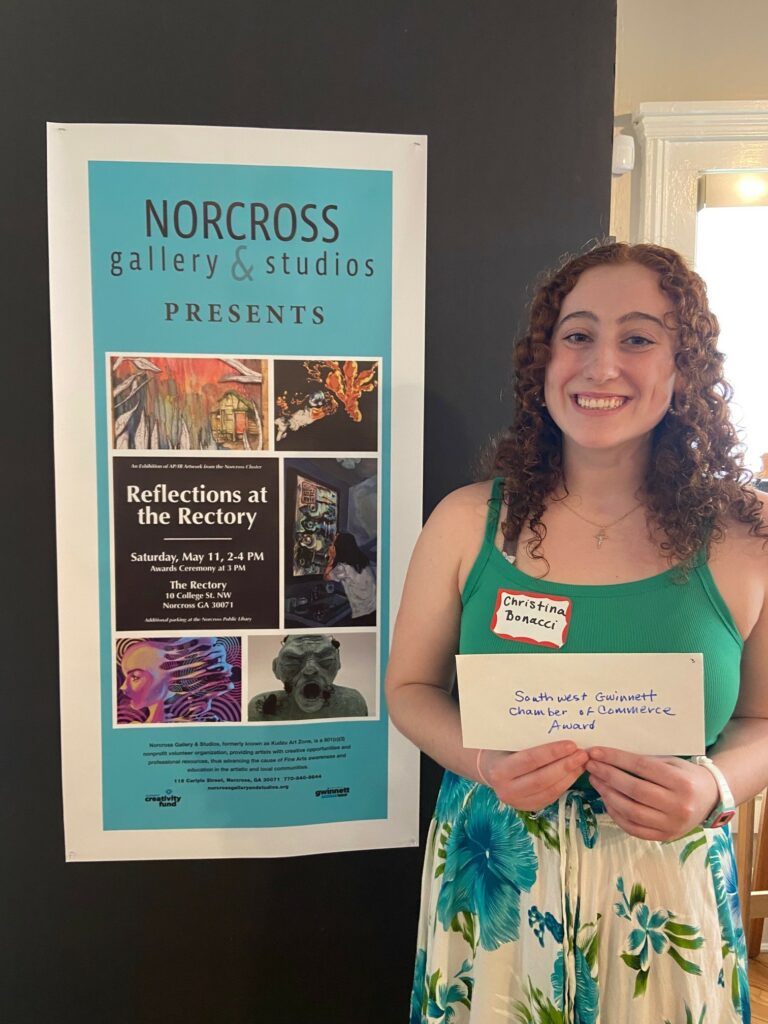
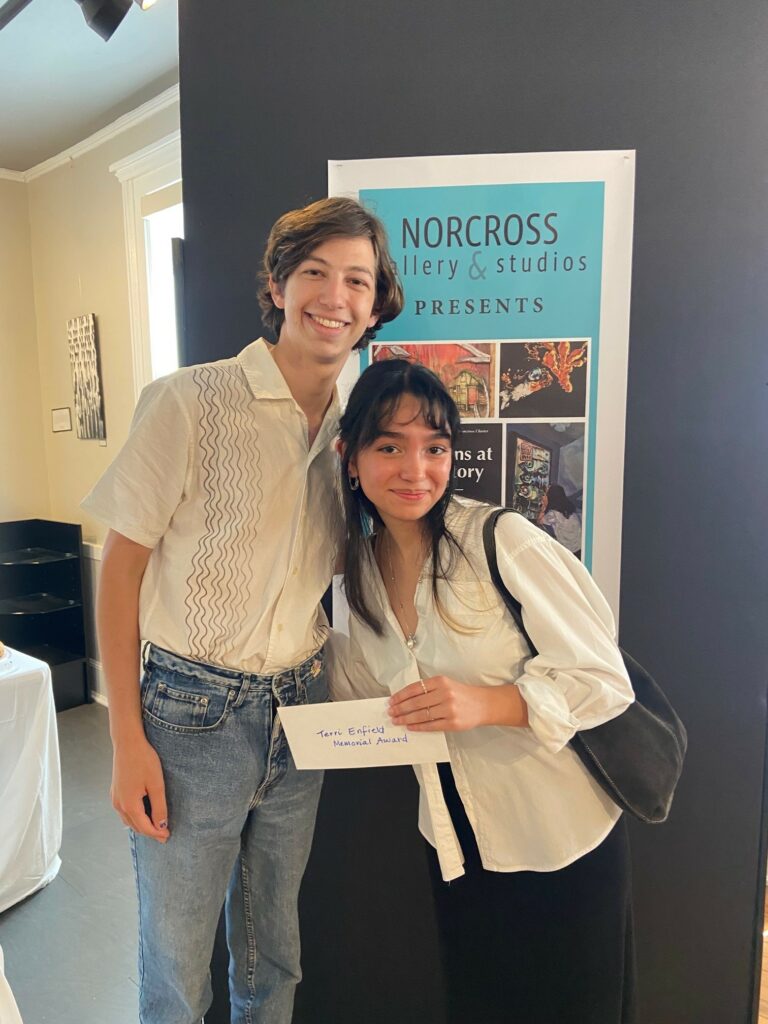
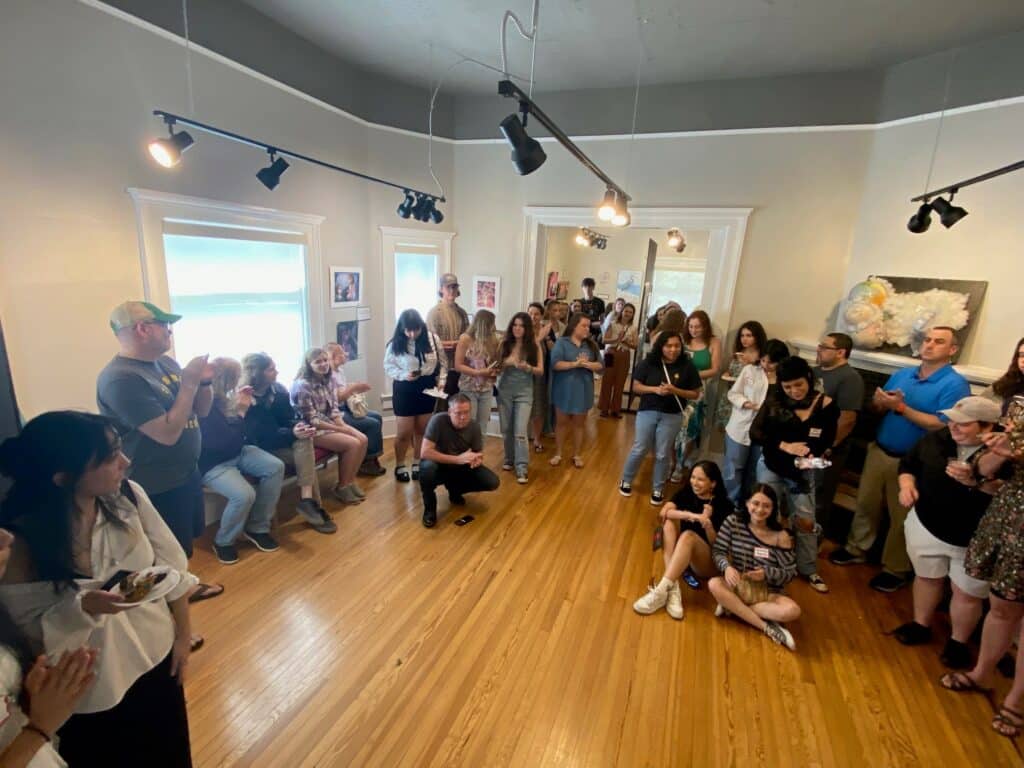
Congratulations to all the student artists.
Students in the second annual Reflections at the Rectory exhibit
Norcross High School:
- Gustavo Benumea-Sanchez
- Maycol Cruz Padilla
- Dorie Liu
- Harlet Martinez Castro
- Paulina Santana
- Gisela Rojas Medina
- Clare Fass
- Ava Netherton
- Ubaldo Diaz
- Katia Navas-Juarez
- Mariah Ingram
- Arisdelcy Juan
- Max Kaiser
- Dani Olaechea
- Christina Bonacci
- Diana Ortiz Ventura
- Katie Yerbabuena-Padierna
Paul Duke High School:
- Adamu Abdul-Latif
- Salma Noor Alabdouni
- Samrin Zaman
- Camryn Vinson
- Liz Damian
- Cecelia Berenguer
- Jasmine Rodriguez
- Angelina Bae
- Dahyana Perez
- Jonah Swerdlow
- Kyra Allicock
- Anni Brown
- Kaleb Fields
- Destiny Jones
- Gabriela Leal-Argueta
- Madisyn Mathis
- Ashley McDonough
- Ahtziri Pinones
- Alondra Valiente-Torres
Related
Arts & Literature
Book, TV and Podcast Recommendations for this Summer
Published
2 months agoon
June 2, 2024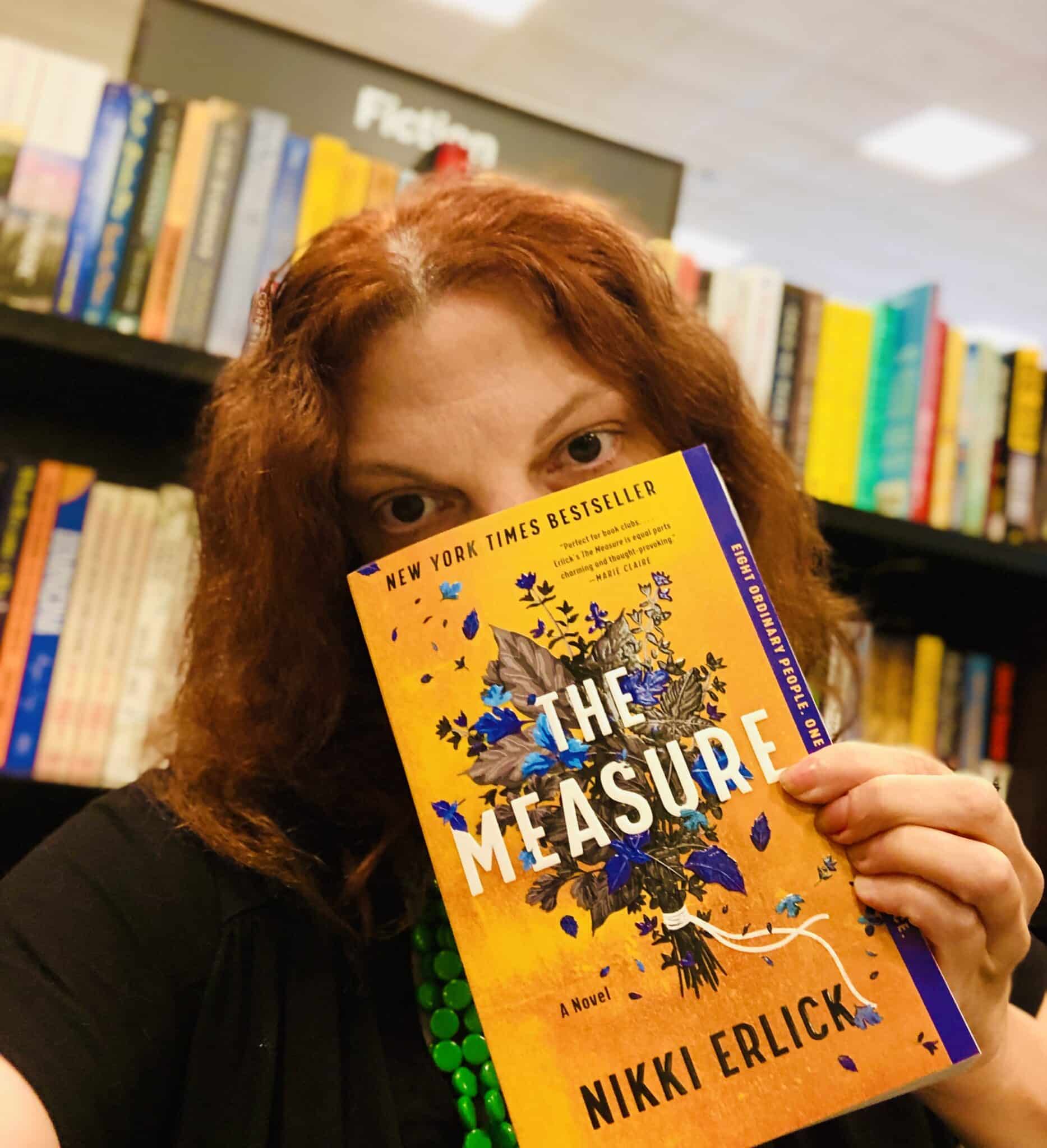
Beat the heat this Summer with a good book, show or podcast. This year, Peachtree Corners Magazine received over 30 recommendations from more than a dozen city residents. There is something for everyone on this list, so let’s dive in.
Machine Made: Tammany Hall and the Creation of Modern American Politics
by Terry Golway
This 400-page book offers readers a comprehensive and insightful exploration of one of the most influential political machines in American history. It provides valuable lessons and perspectives on the intersection of politics, power and society.
Turning Point: The Bomb and the Cold War
Stream on Netflix
This nine-part series offers viewers a thought-provoking exploration of one of the most consequential periods in modern history. It provides deep insights into the complexities of nuclear politics and the enduring legacy of the Cold War.
Fareed Zakaria GPS
Listen on CNN Audio
This podcast comprehensively examines foreign affairs. It enhances a listener’s global awareness, fosters critical thinking and sheds light on complex issues shaping our world today.
— Brian Johnson, City Manager for Peachtree Corners

Empowering Nurses Through Self-care: Unleashing Your Potential and Thriving in the Nursing Profession
by Audrey Boyce
Audrey Boyce offers a practical guide to help nurses find balance and fulfillment in their personal lives and professions. With a comprehensive overview of self-care strategies, this book is essential for nurses looking to recharge, reduce stress and increase job satisfaction.
The Go-Giver, Expanded Edition: A Little Story About a Powerful Business Idea by Bob Burg and John David Mann
The Go-Giver tells the story of Joe, an ambitious young man striving for success. Through Joe’s journey, this book imparts powerful lessons about the significance of giving, collaboration and building meaningful relationships in achieving success.
Special Ops: Lioness
Stream on Paramount+
The protagonist, Joe, attempts to balance her personal and professional life as the tip of the CIA’s spear in the war on terror. The Lioness Program enlists Cruz to operate undercover alongside Joe among the power brokers of State terrorism.
Money and Wealth
Listen on Apple Podcasts
In Money and Wealth, John Hope Bryant provides valuable insights into financial literacy and wealth-building strategies. With a clear and accessible approach, Bryant aims to empower listeners with practical knowledge to achieve financial stability and success.
— Bobby Cobb, CEO of Cobb Global Outreach Inc.

1984
by George Orwell
The new audio drama of George Orwell’s 1984 on Audible is nothing short of phenomenal. With a full cast of film stars and sound effects in stereo, you’ll feel like you’re actually in Oceania, being watched by Big Brother.
— Jill Tew, local author of the forthcoming young adult dystopian novel The Dividing Sky

Enter Ghost
by Isabella Hammad
I recently read this and loved the writing. The author plays around with formatting between narrating the story and switching to the format of a play to show the dynamics between characters.
— Ruwa Romman, Georgia State Representative
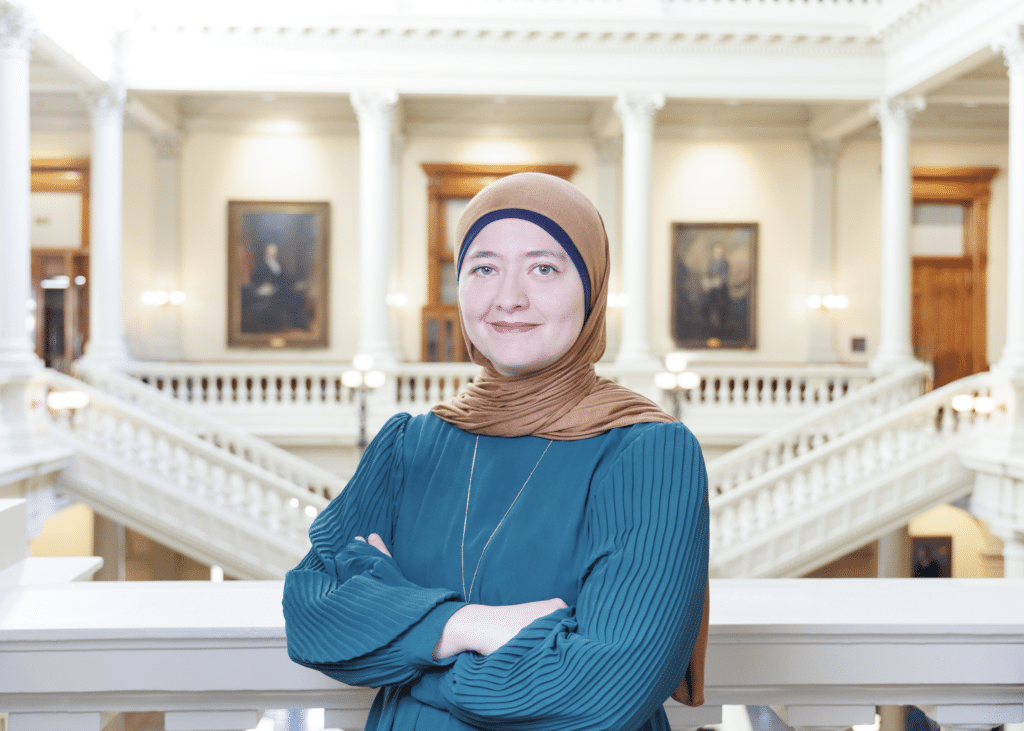
Seeing Eye Girl
by Beverly Armento
Beverly Armento’s account of her life in Seeing Eye Girl is truly remarkable. I was captivated by her story of resilience, strength and, ultimately, forgiveness.
— Erin Griffin, Norcross High School Foundation for Excellence Co-President
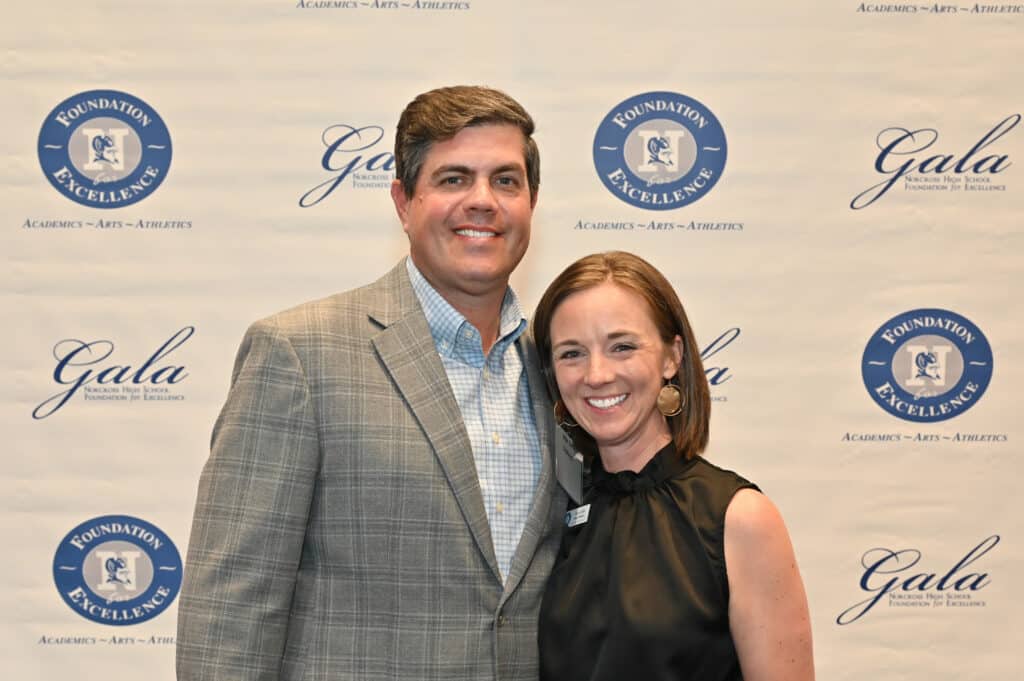
Never Enough: When Achievement Pressure Becomes Toxic – And What We Can Do About It
by Jennifer B. Wallace
This book presents research on how to raise healthy, joyful achievers in a hyper-competitive world. The author was a guest speaker at Greater Atlanta Christian’s (GAC) Parent Partnership Series this year, and we heard about the importance of children knowing that their intrinsic self-worth is not contingent solely upon external achievements.
The Anxious Generation
by Jonathan Haidt
Discover the root causes behind the epidemic of today’s teen mental illness. With compelling data, Jonathan Haidt unveils the decline of play-based childhood and offers practical solutions for a healthier, more fulfilling upbringing. We have asked GAC faculty to add this to their personal summer reading list.
— Dr. Scott Harsh, President of Greater Atlanta Christian School
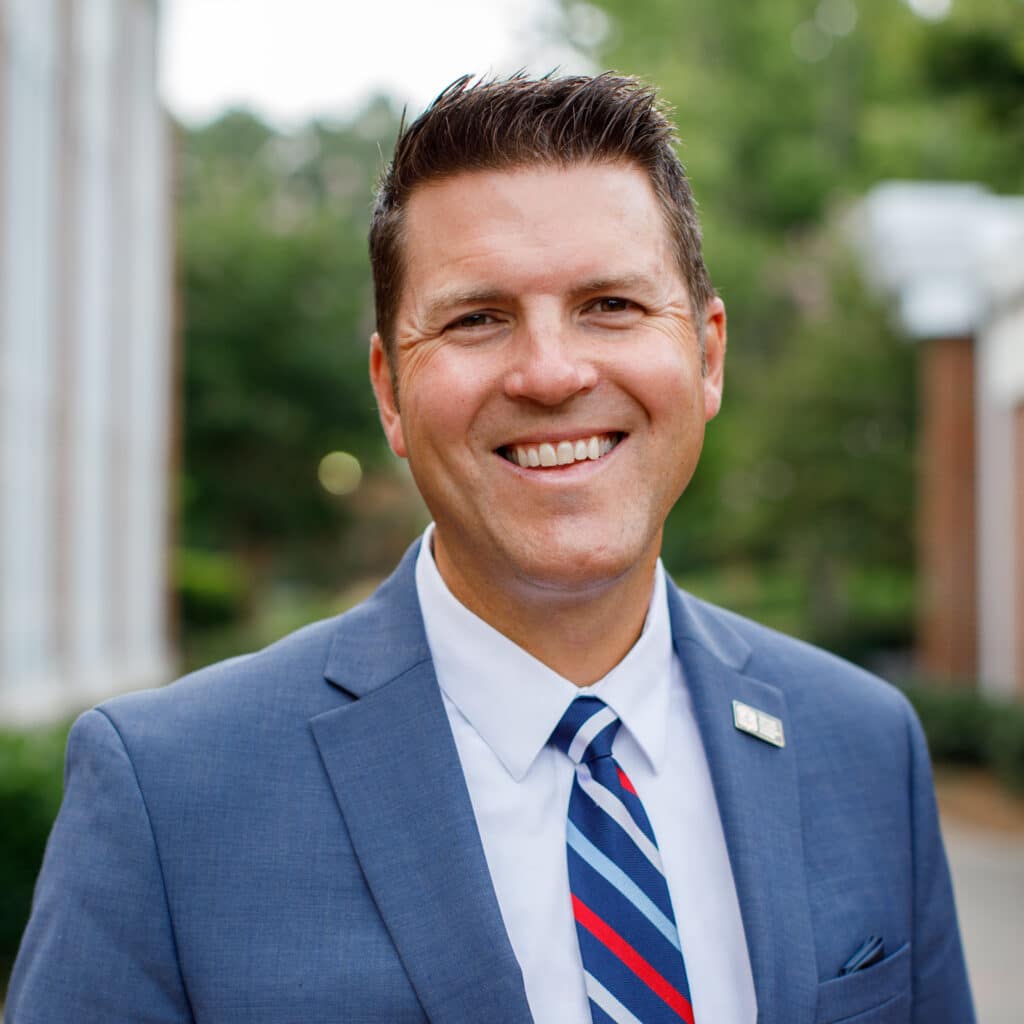
Glad You’re Here
by Craig Cooper and Walker Hayes
Glad You’re Here tells the true, redemptive story of country music singer Walker Hayes and his unlikely friendship with pastor Craig Cooper. In alternating chapters, each individual shares their unique perspective on pivotal moments in their friendship, and the book reminded me to prioritize the patient and persistent cultivation of community.
— Ann Cousins, Communications Director and Wesleyan School
The Boredom Experiment
Listen on Apple Podcasts
The Boredom Experiment, hosted by Jeremy and Ashley Parsons, is a short, heartfelt podcast series that documents and explores the effect of removing digital distractions and social media from their family’s lives for a year.
Over eight episodes, they share their experiences and insights into how this experiment impacts their creativity, relationships and overall well-being. The Parson’s storytelling thoughtfully weaves together interviews, music and their musings in such a creative, personal way that makes it an absolute delight to listen to.
The 1000 Hours Outside Podcast
Listen on Apple Podcasts, Spotify and Youtube
Digital Minimalism
by Cal Newport
Digital Minimalism advocates for a thoughtful and intentional approach to technology use. Newport argues that constant connectivity and digital distractions hinder productivity and well-being and encourages individuals to choose tools and habits that align with their values and long-term goals. In a digitally crowded world, this book was a needed reminder to be intentional with my time and strategic with how I use technology.
— Natalie Dettman, Creative Director at Wesleyan School
Sideline C.E.O.
by Marty Smith
While on this surface this book offers great wisdom from some of the most successful coaches of our time, it also provides a behind-the-scenes look at the lives of many people we admire.
From learning about Greg Sankey figuring out how to lead the SEC through Covid as he sat on his front porch to Mack Brown processing through how to lead his football team through racial tensions at UNC, you realize that these men [and women] are normal human beings that face the same difficult choices as the rest of us.
Not to mention, Marty Smith captures the lives and insight of these coaches in a fun, compelling way!
Practicing the Way
by John Mark Comer
New Kid
by Jerry Craft
Where Do We Go from Here
by Martin Luther King Jr.
— Joseph Antonio, Middle School Principal at Wesleyan School
West with Giraffes
by Linda Rutledge
This is lightly based on a true story. It is the story of moving giraffes who survived a hurricane, were rescued in the Atlantic, and were carried cross-country to the San Diego Zoo. It is well-written, and the character development is fantastic.
Crossing the country with two giraffes during the Depression created excitement in all the small struggling areas. The joy of those who had never dreamed of seeing a giraffe in real life will bring joy to anyone reading this book.
Housewives of True Crime
Listen on Apple Podcasts and Youtube
Moms and Mysteries
Listen on Apple Podcasts, iHeart Radio and Spotify
Southern Fried Crime
Listen on Apple Podcasts and Youtube
Wiser than Me with Julia Louis-Dreyfus
Listen wherever you get your podcasts
— Nancy Minor, The Nancy Minor Team
The Women
by Kristen Hannah.
A great read about the Army nurses in Vietnam.
— Laurie Rogers, The Nancy Minor Team
In The Woods
by Tana French
This book is a real page-turner. The author is a gifted writer, so even though it is a crime thriller, it reads like a novel. There are six books in the series, and I have read all of them.
Casefiles
Listen on Apple Podcasts and Spotify
This is a true crime podcast that has been around for several years. The stories are detailed and very interesting and cases are examined from all over the world.
— Shameka Allen, MBA, MA, CEO of Good Samaritan Health Centers of Gwinnett
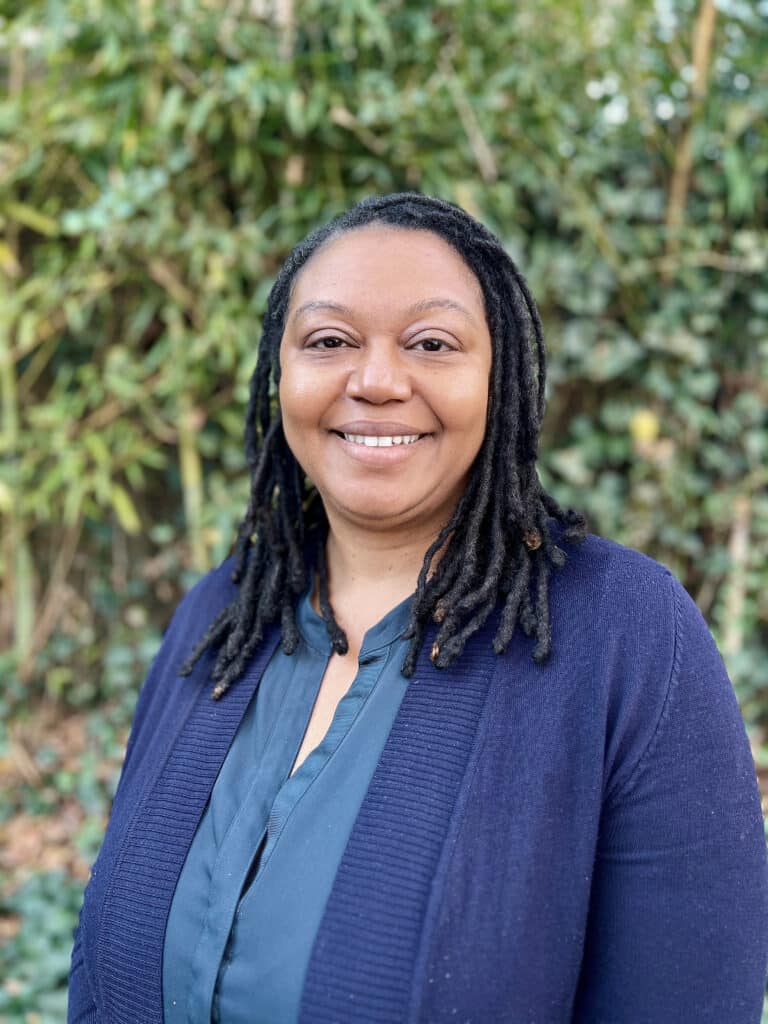
Over the Edge of the World
by Laurence Bergreen
Over the Edge of the World is a captivating account of Magellan’s expedition around the world. We all know Magellan’s name but few of us know the rich details behind the adventure and how it unfolded. I was inspired by the courage and bravery of those who took part in the great Age of Exploration.
Arrested Development
Stream on Netflix
This is easily one of our favorite shows. My wife, Meredith, and I have watched and re-watched it so many times and still find it so hilariously funny. The show blends clever writing with quirky characters and intricate, running gags. There’s always money in the Banana Stand!
Dr. Death
Listen on Apple Podcasts, Spotify and Wondery
This gripping true-crime podcast explores the shocking story of a dangerous surgeon. It’s a must-listen for its compelling narrative, deep investigative journalism and critical insights into medical malpractice and systemic failures. The podcast has since been made into a limited streaming TV series.
— Scott Hilton, Georgia State Representative
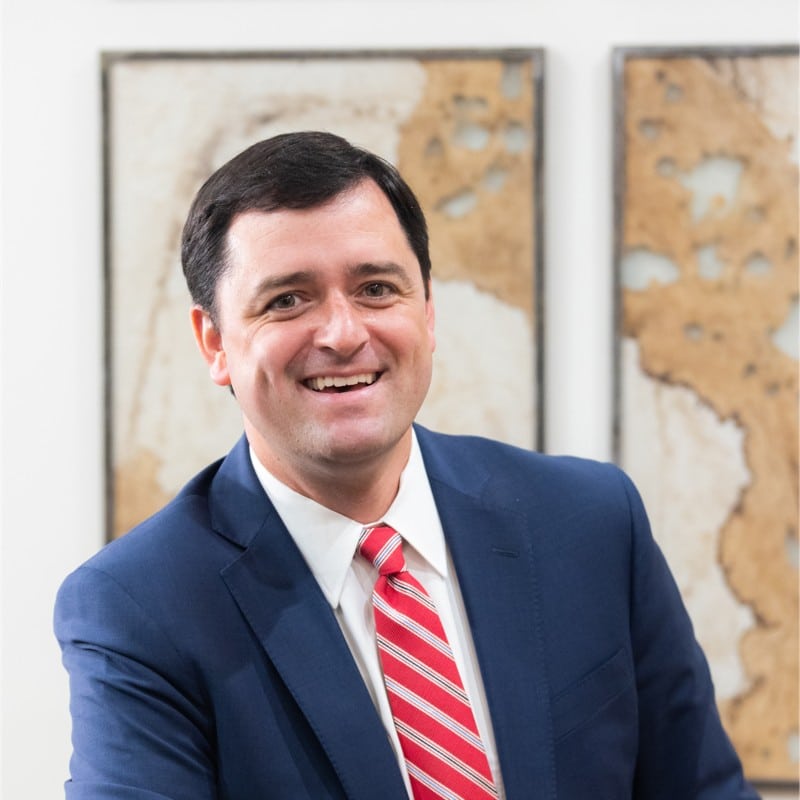
Sleep Wrecked Kids
by Sharon Moore
This book explains how inadequate sleep affects children’s growth, development and learning. This is a great guide to creating better sleep routines.
Healthy Sleep Happy Kid
by Meghna Dassani
This quick, easy read offers valuable insights into how sleep impacts a child’s health. It provides practical tips for improving your child’s sleep environment and habits and is a go-to resource for parents aiming to enhance their child’s sleep and overall wellness.
I can’t overstate the importance of good sleep habits for the overall well-being of your child and the entire household. Quality sleep is the foundation for happy, healthy kids and stress-free parents, setting the stage for the best possible summer with your family.
— Dr. Gia Grannum, Board Certified Pediatric Dentist of Agape Pediatric Dentistry

The Measure
by Nikki Erlick
I recommend The Measure by Nikki Erlick, which is about to come out in paperback! It’s a great pick for summer reading or a book club!
Poured Over, the Barnes & Noble Podcast
Stream on the Barnes & Noble website and Apple Podcasts
Check out the Poured Over podcast for interviews with your favorite authors, book recommendations for your TBR pile and more.
— Amanda Couch, Assistant Manager at Barnes & Noble at The Forum
Want even more recommendations? Check out last year’s list here.
Related
Read the Digital Edition
Subscribe
Keep Up With Peachtree Corners News
Join our mailing list to receive the latest news and updates from our team.
You have Successfully Subscribed!

What’s going on at Jones Bridge Park and the Challenges of Urban Development

Taste of Peachtree Corners: PCBA Showcases Local Restaurants

The Forum Gives Sneak Peek of New Eateries and Community Spaces

Southwest Gwinnett Mayors Share Visions for the Future

8 Events Happening In and Around Peachtree Corners This August

Peachtree Corners Shines Bright with Light Up the Corners Glow Race this August

Peachtree Corners Shines Bright with Light Up the Corners Glow Race this August

The Forum Gives Sneak Peek of New Eateries and Community Spaces

8 Events Happening In and Around Peachtree Corners This August

Southwest Gwinnett Mayors Share Visions for the Future

Taste of Peachtree Corners: PCBA Showcases Local Restaurants

What’s going on at Jones Bridge Park and the Challenges of Urban Development

Local Resident Opens AtWork Location in Peachtree Corners

CHRIS 180 Expands its Services into Gwinnett County [Podcast]

Light up the Corners [Video]

Capitalist Sage: Business Leadership in Your Community [Podcast]

Cliff Bramble: A Culinary Adventure through Italy

Top 10 Brunch Places in Gwinnett County

A Hunger for Hospitality

THE CORNERS EPISODE 3 – BLAXICAN PART 1

Top 10 Indoor Things To Do This Winter

The ED Hour: What it takes to Remove Barriers from Education
Peachtree Corners Life
Topics and Categories
Trending
-
Business1 week ago
Taste of Peachtree Corners: PCBA Showcases Local Restaurants
-
Business2 days ago
The Forum Gives Sneak Peek of New Eateries and Community Spaces
-
City Government4 days ago
Southwest Gwinnett Mayors Share Visions for the Future
-
Around Atlanta4 days ago
8 Events Happening In and Around Peachtree Corners This August


